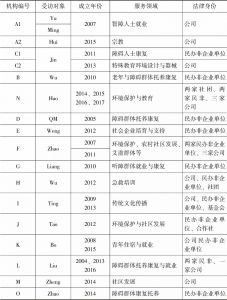论文
使命vs活命:长三角地区社会企业双重目标之平衡
摘要
社会企业如何策略回应社会经济双重目标平衡之挑战及其选择背后的制度因素是本研究关注的问题。以长三角地区16家社会企业为案例,本文对组织运营现状、双重目标平衡策略进行了分析。本文提出,个案社会企业运作的鲜明特点在于“公司+民非”双重法律身份运作,这是对当前不确定的规制环境以及欠缺包容的公益文化环境的应对。“活命”较之“使命”是多数社会企业的优先策略考虑,无论是商业发起还是非营利发起的社企,服务对象从个体消费者转向商业企业和政府以及轻资产运营策略的使用可有助于其商业目标的实现,但要使组织的社会目标发生转移,组织“社会使命”的达成仍然需要依赖健全有力的机构治理机制保障。
作者
田蓉 ,南京大学社会学院副教授,主要研究方向为社会福利与非营利组织发展、社会企业、社区基金。
检索正文关键字
论文目录
- 一 引言
- 二 制度环境与社会企业双重目标平衡
- 三 数据与方法
-
四 结果与分析
- (一)个案社会企业双重目标平衡策略
- 1.多元化
- 2.交叉补贴
- 3.双重法律注册
- 4.缓慢发展
- 5.服务对象从B2C/B2N转向B2B/B2G
- 6.轻资产运营
- 7.治理机制保障
- 8.借力使力
- (二)制度压力与中国社会企业同形化
- (一)个案社会企业双重目标平衡策略
- 五 结语
相关文献
查看更多>>>






